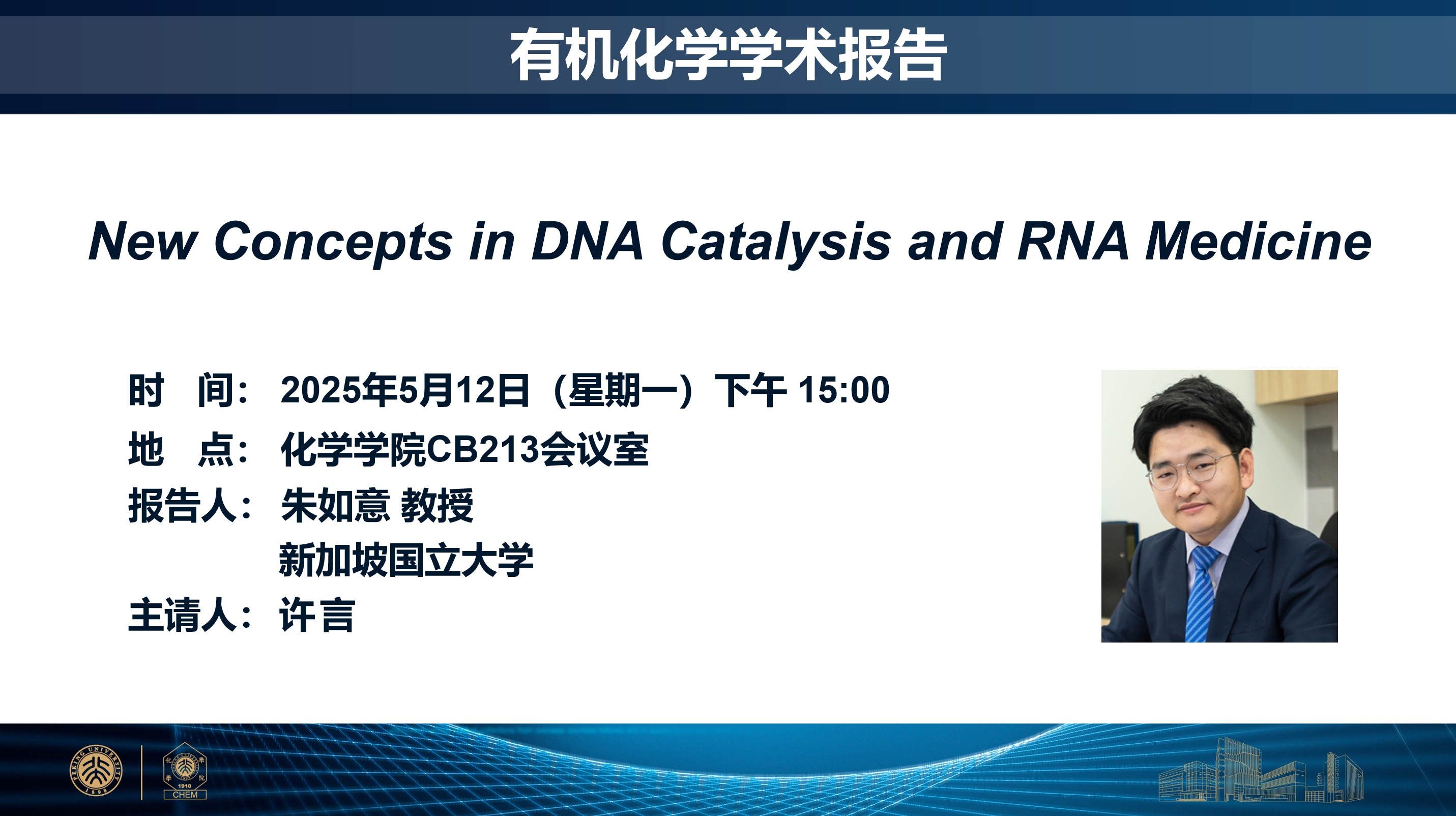
Abstract
DNA is an underexplored scaffold for asymmetric catalysis. Its structure can be programmed to adopt enzyme-like 3-D structure or even architectures resembling MOF/COF. In this talk, I will discuss how we harness ubiquitous phosphates for ion-pairing DNA catalysis and how the helical structure of DNA, in conjunction with a bimetallic center, facilitates a new mode of sterecontrol. This bimetallic DNA catalyst enables the construction of multiple contiguous stereogenic centers with switchable enantioselectivity as well as switchable chemoselectivity.
In the latter part of the talk, I will introduce a “install-deliver-release” strategy for RNA delivery and a site-selective RNA modification method using catalysis. We leverage post-synthetic RNA acylation and disulfide exchange chemistry for RNA delivery and conjugation. I will talk about thiol-mediated RNA delivery via non-endocytosis pathway and GalNAc-mediated cell-selective RNA delivery. I will end my presentation talking about a universal site-selective RNA modification approach and its applications.
Biography
Ruyi earned a B.S. with honors and distinction in chemistry from Peking University (China) in 2013. He earned his PhD at the Scripps Research Institute in 2018 with Jin-Quan Yu and undertook postdoctoral studies at Stanford University with Eric T. Kool. Ruyi started his independent career as an Assistant Professor at NUS in late 2021. The Zhu lab develops new concepts in DNA catalysis and new strategies for RNA biomedicine. He is the recipient of the ACP Lectureship Awards (from China, Korea, and Japan), and Presidential Young Professorship among others.